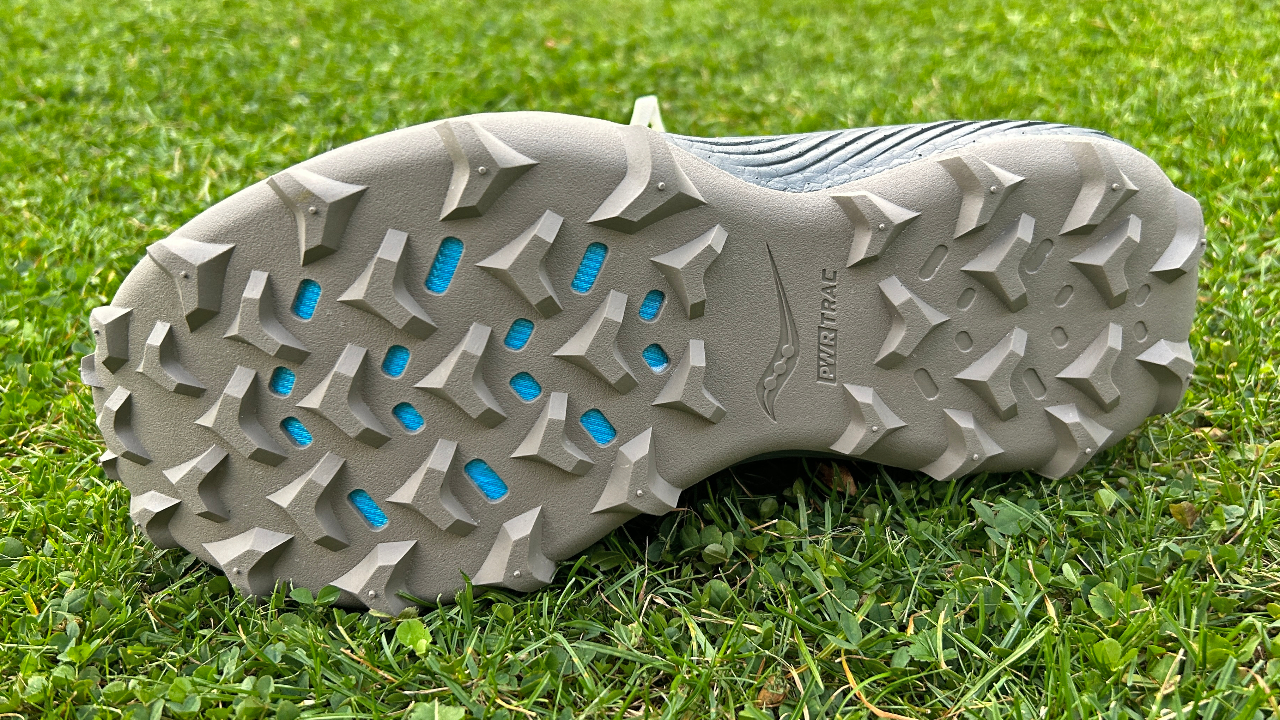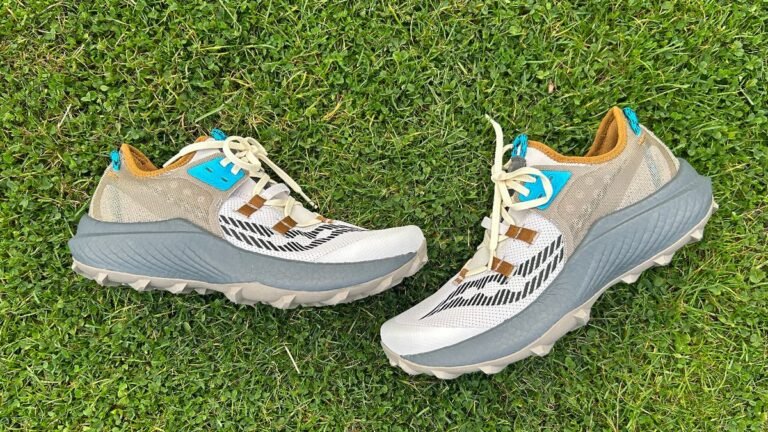The Saucony Endorphin line includes some of the best running shoes available for the road, such as the Saucony Endorphin Speed 3 and Pro 3. However, on the trail side, the performance of the Endorphin shoes has been more of a mixed bag.
The Saucony Endorphin Edge carbon plate racer is one of the best trail running shoes available, but the original Endorphin Trail was a misfire—heavy and overpriced. The Saucony Endorphin Rift is somewhere in the middle. It’s fun to use, but it doesn’t excel at anything, and it’s very expensive when Saucony and other brands have alternatives that cost less. Especially the Asics Fujispeed 2 is a better choice.
Saucony Endorphin Rift: Price and Availability
The Saucony Endorphin Rift was released in May 2023 and costs $170 in the US and £180 in the UK. That’s expensive for a non-carbon running shoe, and only slightly less than the Endorphin Edge plated racing shoe, which costs $200/£200.
How I tried this shoe
I’ve run 30 miles in the Saucony Endorphin Rift, using it for slow and fast training runs in my local woods on a mix of packed trails, mud and grass. I’ve also tried the Saucony Endorphin Edge and a number of the best running shoes.
Design and implementation
The feature that connects the Rift to the rest of the Saucony Endorphin line is its midsole. It’s made from the Peba-based PWRRUN PB foam used so successfully in shoes like the Endorphin Pro 3 and features the same Speedroll rocker geometry to create a smooth heel-to-toe transition.
There is no performance-focused carbon plate in the midsole, although there is a flexible woven rock plate under the forefoot to protect your feet on rocky trails. The shoe has a fairly wide design and foam sidewalls to help with stability. Stack height is 33mm in the heel and 27mm in the forefoot for a 6mm drop.
The mesh upper is a sophisticated affair with a high collar, and there’s a second layer of fabric on the back of the shoe to add more structure around the heel. The toe box has a reinforced bumper to protect you from accidental impacts on the trails, and there are loops on the heel and tongue to help you pull the shoe off.

I found the fit to be tight in my normal running shoe size and especially tighter around the toes than the Endorphin Edge. However, the grip around the midfoot and heel was good, and I would hesitate to go up a size. If you plan to cover a lot of distance in the shoe with lots of downhills, the tight toe box can become uncomfortable: I noticed my toes hitting the front of the shoe on one foot when running fast downhill.
The outsole has 4.5mm lugs and a similar design to the outsoles of the Saucony Xodus Ultra 2 and Peregrine 13. Traction was good on soft ground thanks to these fairly long lugs, which are a slightly unusual choice – most of the most cushioned fast track shoes I’ve tried, they have shorter, flatter lugs for hard ground. The long overhangs on the Endorphin Rift add weight and make the ride less smooth on harder, flatter trails.
At 9.9zoz/281g in a UK size 9, the Endorphin Rift isn’t heavy for a trail shoe with such a substantial outsole and fairly high cushioning stack, but it’s also not light enough to feel nimble and fast. Cutting the outsole to make it lighter may have helped it stand out more from Saucony’s other trail shoes.
Running performance

Based on the features and materials used, I was hoping the Endorphin Rift could be a Saucony Endorphin Speed 3 for the trails, as it has a similar PWRRUN PB foam stack and the Rocker Speedroll. However, the thicker upper and outsole make a big difference and the Rift didn’t feel like a light speedster on foot. It was bouncy when I was on harder terrain, and the rocker pushed me to my toes effectively—though when I was on softer trails or tight, winding trails, it didn’t feel light or nimble.
I did a few progression runs in the shoe, starting easy and finishing around my pace effort, and it was a slog to run fast in the Endorphin Rift, which was unexpected. It’s a big shoe and feels cumbersome when you’re on even slightly soft trails.
This is why the outsole on the shoe confused me. On harder terrain I got more bounce and better ride from the midsole, but the outsole wasn’t as comfortable on hard trails or paved surfaces as one with lower, flatter lugs. The grip seems designed for soft ground, but the midsole worked better on harder stuff.
Overall, while the Rift was good for various rides, it didn’t look great or great for anything, and that’s a problem given the high price.
Is the Saucony Endorphin Rift worth it?

On the plus side, the Saucony Endorphin Rift is a good trail shoe, but it doesn’t make my list of best Saucony shoes because there are better (and better value) shoes out there. The Saucony Xodus Ultra 2 and Saucony Peregrine 13 work well for similar runs in my experience and are cheaper than the Rift.
If you’re looking for a fast trail shoe, then the Saucony Endorphin Edge is a wiser choice and often on sale now. Or you can get the Asics Fujispeed 2 for less, and this shoe is more like a Saucony Endorphin Speed 3 for trails.
Ultimately, I just don’t know exactly what the Endorphin Rift is for and it’s too similar to other Saucony shoes to recommend. It would stand out more in the lineup if the outsole and upper were reduced to make a lightweight shoe that’s a quick option for those who don’t want a plate.
